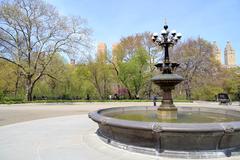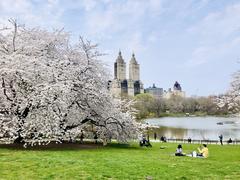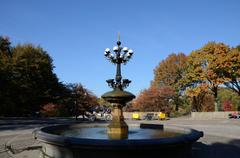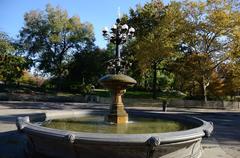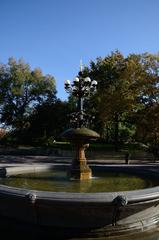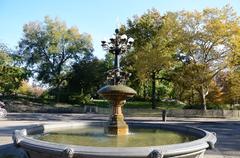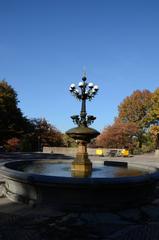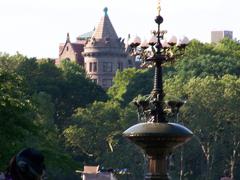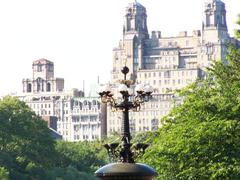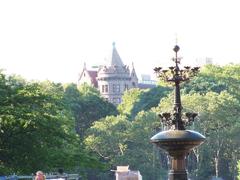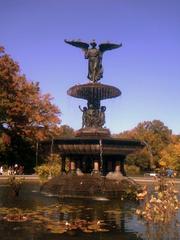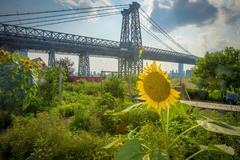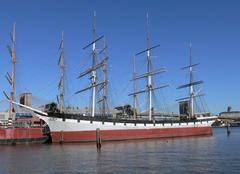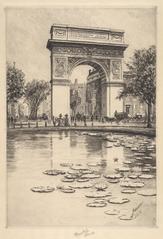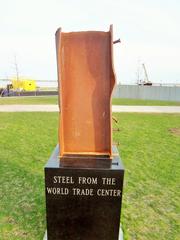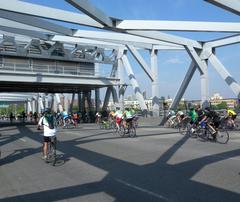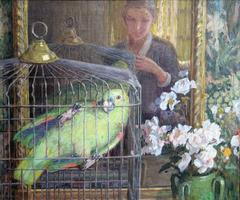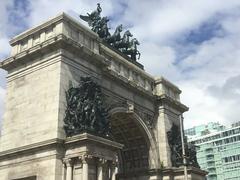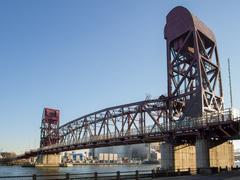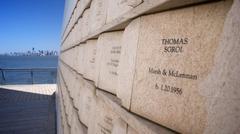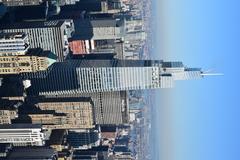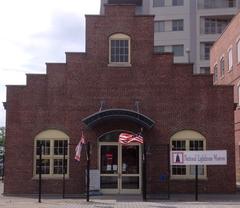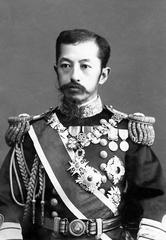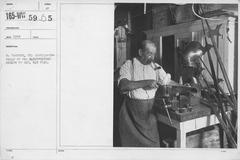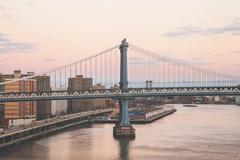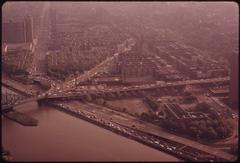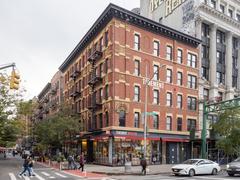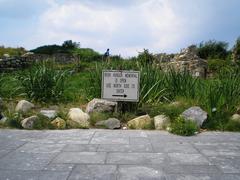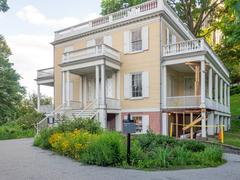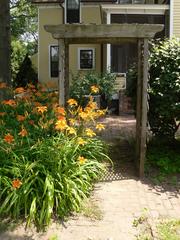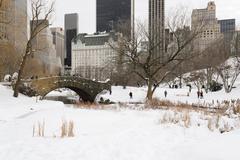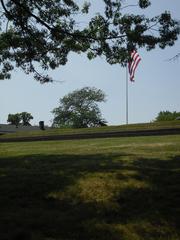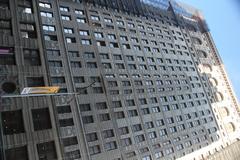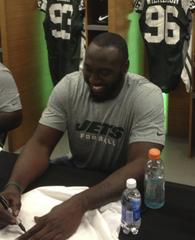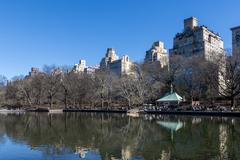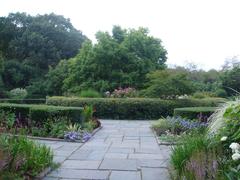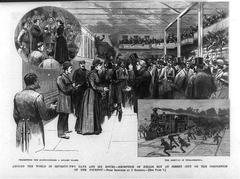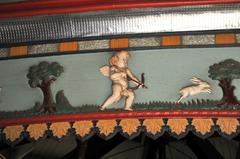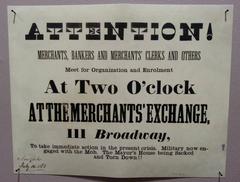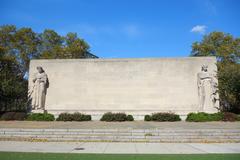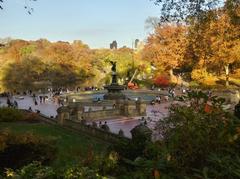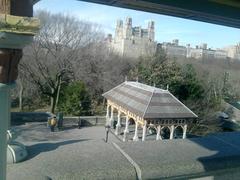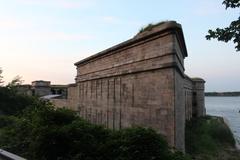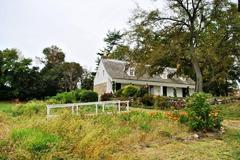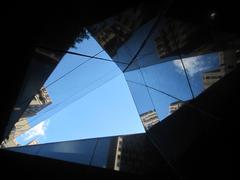
Comprehensive Guide to Visiting Cherry Hill Fountain, New York City, United States
Date: 24/07/2024
Introduction
Nestled in the heart of Central Park, New York City, Cherry Hill Fountain is a captivating blend of historical significance and architectural beauty. Designed by the British architect Jacob Wrey Mould and completed in 1860, this Victorian-era fountain was initially intended to serve as an ornate drinking fountain for horses. Its intricate design and cultural relevance have made it a beloved landmark in Central Park, attracting both locals and tourists alike (Central Park NYC).
Cherry Hill Fountain is a picturesque spot where visitors can enjoy picnicking, photography, and relaxation amidst the scenic beauty of Central Park. The surrounding cherry trees bloom each spring, transforming the area into a magical sight, making it a favorite location for seasonal visits. Additionally, its proximity to other iconic landmarks like Bow Bridge and the Ramble enhances the visitor experience, offering a seamless transition from open expanses to wooded trails (Wikipedia).
This guide will delve into the rich history and architectural design of Cherry Hill Fountain, provide practical visitor tips, and explore its cultural significance and role in popular culture. Whether you’re a history buff, an architecture enthusiast, or simply looking for a tranquil spot to unwind, Cherry Hill Fountain offers something for everyone.
Table of Contents
History and Significance of Cherry Hill Fountain
Historical Background
Cherry Hill Fountain, located in Central Park, New York City, is a notable landmark with a rich history dating back to the mid-19th century. The fountain was designed by Jacob Wrey Mould, a British architect and designer who collaborated with Frederick Law Olmsted and Calvert Vaux, the masterminds behind Central Park’s overall design. The fountain was completed in 1860 and was initially intended as an ornate drinking fountain for horses, reflecting the era’s reliance on horse-drawn carriages.
Architectural Design
The Cherry Hill Fountain is an exquisite example of Victorian-era design. It features a large, circular basin with intricate carvings and a central column adorned with decorative elements. The fountain’s design is both functional and aesthetic, serving as a watering spot for horses while providing a picturesque setting for park visitors. The surrounding plaza, which connects to 72nd Street Drive, was originally used as a resting point for carriages, further emphasizing the fountain’s historical significance as a hub for transportation and leisure (Central Park NYC).
Cultural Significance
Cherry Hill Fountain holds a special place in the cultural fabric of New York City. It is not only a historical landmark but also a popular spot for picnicking, photography, and relaxation. The area is dotted with cherry trees that bloom each spring, transforming the landscape into a magical sight. This seasonal transformation has made Cherry Hill a favorite location for both locals and tourists, offering a serene escape from the bustling city (Full Suitcase).
Connection to the Ramble via Bow Bridge
One of the unique aspects of Cherry Hill is its connection to the Ramble via Bow Bridge. Bow Bridge, another iconic structure in Central Park, is a Victorian-era bridge known for its low-lying arch that resembles the bow of an archer. This bridge is one of the most popular photo spots in the park and serves as a picturesque link between Cherry Hill and the Ramble, a 36-acre woodland area designed for wandering and exploration. The connection between these two landmarks enhances the visitor experience, offering a seamless transition from the open, grassy expanse of Cherry Hill to the dense, wooded trails of the Ramble.
Role in Popular Culture
Cherry Hill Fountain has also made its mark in popular culture. It has been featured in numerous films, television shows, and photographs, further cementing its status as a New York City icon. The fountain’s picturesque setting and historical charm make it a sought-after location for filmmakers and photographers looking to capture the essence of Central Park (Wikipedia).
Visitor Tips
Best Time to Visit
The best time to visit Cherry Hill Fountain is during the spring when the cherry trees are in full bloom. This period typically lasts from late March to early April, depending on the weather. The blooming cherry trees create a stunning backdrop for photographs and provide a tranquil setting for picnics and leisurely strolls.
Visiting Hours and Tickets
Cherry Hill Fountain is accessible to the public daily from 6:00 AM to 1:00 AM. There is no ticket required to visit the fountain, making it a free attraction within Central Park.
Activities and Attractions
Visitors to Cherry Hill Fountain can enjoy a variety of activities. The sloping lawn is ideal for picnicking, taking a nap in the grass, or watching the rowboats make their way across the lake. At the top of the hill, the Cherry Hill Fountain offers a picturesque spot for photography and relaxation. Additionally, the nearby Bow Bridge provides a scenic route to the Ramble, where visitors can explore winding trails and enjoy birdwatching.
Accessibility
Cherry Hill Fountain is easily accessible from several entrances to Central Park. The closest entrance is at 72nd Street and Central Park West, which leads directly to the surrounding plaza. The area is well-maintained and features paved paths, making it accessible for visitors with mobility issues. Additionally, the Central Park Conservancy offers walking tours that include Cherry Hill and other nearby attractions, providing an informative and engaging way to explore the area.
Preservation Efforts
The preservation of Cherry Hill Fountain and its surrounding area is managed by the Central Park Conservancy, a non-profit organization dedicated to maintaining and enhancing Central Park. The Conservancy’s efforts include regular maintenance, landscaping, and restoration projects to ensure that the fountain and its surroundings remain in pristine condition for future generations to enjoy. These efforts are crucial in preserving the historical and cultural significance of Cherry Hill Fountain, allowing it to continue serving as a beloved landmark in Central Park (Central Park NYC).
Frequently Asked Questions
What are the visiting hours for Cherry Hill Fountain? Cherry Hill Fountain is open daily from 6:00 AM to 1:00 AM.
Are there guided tours available? Yes, the Central Park Conservancy offers guided walking tours that include Cherry Hill Fountain and other nearby attractions.
Do I need a ticket to visit Cherry Hill Fountain? No, visiting Cherry Hill Fountain is free of charge.
What is the best time to visit Cherry Hill Fountain? The best time to visit is during the spring when the cherry trees are in full bloom, typically from late March to early April.
Conclusion
Cherry Hill Fountain stands as a testament to the rich historical and cultural heritage of Central Park. Its Victorian-era design, connection to the Ramble via Bow Bridge, and role in popular culture make it a must-visit destination for anyone exploring New York City. The fountain’s picturesque setting and seasonal cherry blossoms offer a serene escape from the bustling city, providing a memorable experience for all visitors (Full Suitcase).
Preservation efforts by the Central Park Conservancy ensure that this historical landmark remains in pristine condition for future generations to enjoy (Wikipedia). Whether you’re picnicking on the sloping lawn, capturing the perfect photograph, or simply enjoying the serene surroundings, Cherry Hill Fountain offers a unique blend of history, beauty, and tranquility. For more tips and updates on Central Park’s attractions, be sure to follow us on social media and check out our other blog posts.
References
- Central Park NYC. (n.d.). Cherry Hill Fountain. Retrieved from https://www.centralparknyc.org/locations/cherry-hill-fountain
- Wikipedia. (n.d.). Cherry Hill Fountain. Retrieved from https://en.wikipedia.org/wiki/Cherry_Hill_Fountain
- Full Suitcase. (n.d.). Central Park, New York City. Retrieved from https://fullsuitcase.com/central-park-new-york-city/
